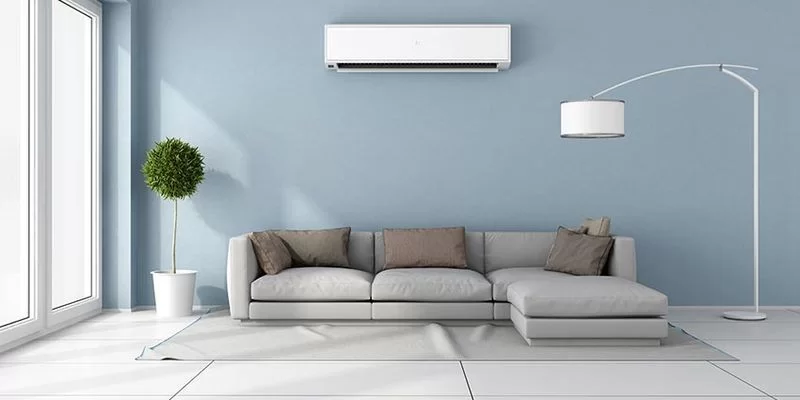
Compare split system and air conditioning | Important differences
Many of us often think about improving the climatic conditions at home, in the office, and this often leads to the purchase of an appropriate device. But sometimes, among the variety of air conditioners, your eyes just run up and it can be oh so difficult to make the best choice. Manufacturers offer consumers standard models of air conditioners and split systems. Which one is better and is there any difference between them? Our experts have figured it out.

Split system features
In fact, a split system is one of the varieties of air conditioners, so it would be wrong to consider both devices separately from each other. A standard air conditioner, or as it is also called «mobile», as well as monoblock structures for cooling indoor air, are a single structure, all the functional parts of which are in one place.
As a result, such products are distinguished by considerable noise, reaching up to 50 dB (in terms of noise, this is comparable to a conversation between two people). Sleeping under such conditions would, of course, not be particularly comfortable. It is because of this inconvenient feature that air conditioner manufacturers have developed a two-block split system, consisting of an external element, including a compressor, fan, condenser and an internal one. The first block is located on the outside of the building and serves to bring out the products of the work of the elements of the indoor unit.
The indoor unit of the split system was created directly for heating and cooling the air in the room. By the way, some models of indoor units can change not only the air temperature, but also its “content”, filtering from unnecessary elements.
The blocks are interconnected by special tubes with thermal insulation, made in most cases from copper. Most often, when installing a split system, they hide behind a decorative box, suspended ceiling or directly in the wall, so consumers do not even notice that they are present in the design.
Split systems have gained incredible popularity not only due to their almost silent operation, but also because of the presence of additional options: purification, humidification, air heating, etc. This type of air conditioner is equally effectively used both in residential and office premises, ideally fitting into any interior.
Difference from air conditioner

The split system has several significant differences from the air conditioner, making it a constant favorite in the market for devices that cool the room. The main feature of the device under consideration is its ability not only to reduce, but also to increase the air temperature in the room (that is, to heat it). The standard temperature range of a split system is from -15 0From to +43 0FROM.
ON A NOTE. Owners of multi-room apartments or houses, if they wish to have air conditioning in each of the premises, can choose an optimized option for themselves — a multi-system. It consists of several remote blocks, the number of which sometimes reaches 8.
The main advantages of split systems:
-
Low noise;
-
High functionality;
-
Possibility of placement in any point of the room;
-
Climate control;
-
Remote control of the system;
-
High-quality durable filters;
-
WiFi, etc.
But the classic monoblock air conditioners cannot be called as multi-optional. Window options, for example, installed in a window opening, not only reduce the amount of natural light in the room, but also create a lot of noise, they are distinguished by impressive dimensions. Such models are no longer popular: they are represented by a limited number of design variations.
But mobile models are still competing with split systems. They are convenient because they can be moved from one place to another. This option is perfect for compact spaces. To improve the microclimate in the room, it is enough to bring the corrugated hose out and connect the air conditioner to the network. But such products, again, are very noisy, cover a small area of the room, and do not always maintain the temperature regime at the proper level.
As for performance, it is not as high as that of split systems, which is primarily due to the design features of conventional air conditioners. The problem is that the noisy compressor is running indoors, and the high noise levels make it impossible for designers to improve the performance of the element without hearing damage.
ON A NOTE. Supporters of split systems often choose them instead of monoblock air conditioners, not only because of the lower noise level and diverse functionality. The fact is that in a standard air conditioner, condensate is sometimes drained only manually with a frequency of 1 time in 3 hours. By the way, recently manufacturers began to please the market with improved models of air conditioners that can remove moisture on their own.
Comparative characteristics
As mentioned earlier, split systems and air conditioners are actually the same thing, however, there are significant differences between the two devices. We analyzed them and put them in a general comparison table.
|
|
|
|
|
|
A whole range of functions, including, in addition to cooling / heating air, the possibility of filtering, ionizing, remote control of the system
|
The main function is air cooling
|
|
|
Air conditioning of premises with an area of 60-80 sq.m
|
Air conditioning for rooms up to 35 sq. m
|
|
|
Low noise level — about 26 dB
|
High noise level — up to 50 dB
|
|
|
The design provides filters and capacitors
|
The design does not include filters and capacitors
|
|
|
From -15 0From to +43 0FROM
|
The device is independent of the outside temperature
|
|
|
A variety of devices of various shapes, colors and sizes allows you to choose the option for any interior
|
Standard bulky designs in white
|
Добавить комментарий
Для отправки комментария вам необходимо авторизоваться.